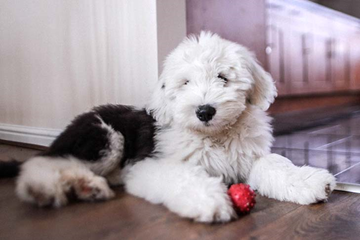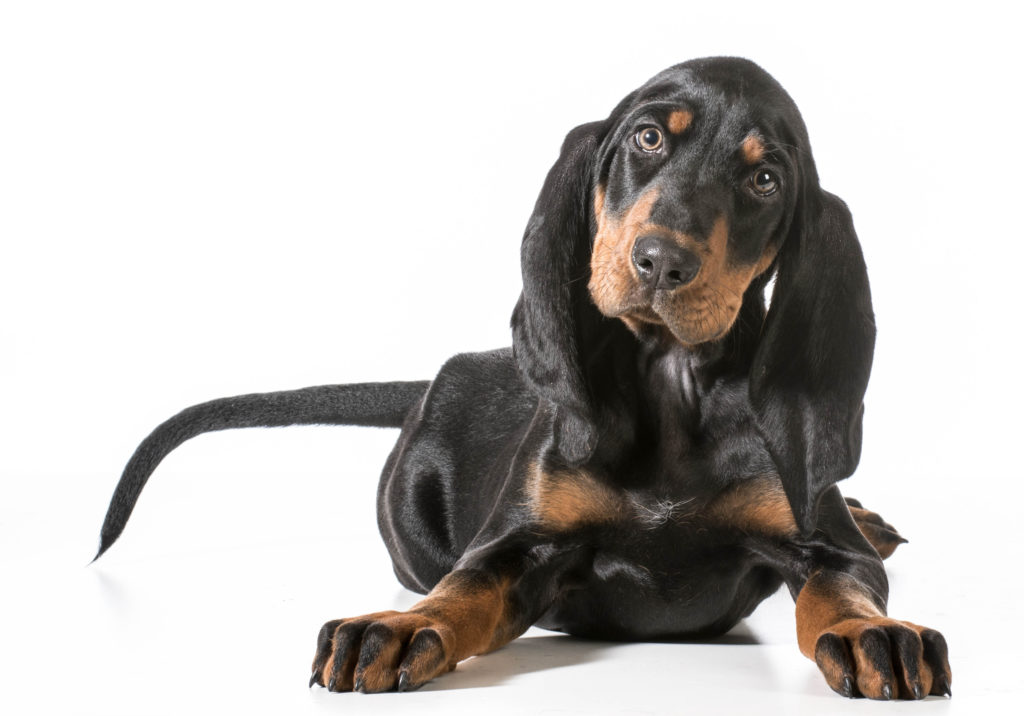One of the most common questions I hear from clients is how to teach their puppies/dogs how to settle down. Clients complain that they cannot get their dogs to relax or self-occupy by play with their toys or chew their bones. These clients are often exhausted by continue attention and play solicitation by their dogs, or trying to control their dogs exuberance with guests in the home.
The first thing that comes to mind when I hear of these concerns from my clients is “who’s in control”? Generally clients will tell me of their attempts to control their dogs, but their dogs are just not learning! I understand and feel their frustration. I too have lived with exuberant puppies and high energy dogs.
Let’s take a look at the whole idea of control. Should we really be putting the emphasis on controlling our dogs? What if we taught our dogs to calm and control themselves, like we teach children?
When work to control our dogs we 1. Give them a lot of attention (reinforcement) for the very behavior(s) we do not like, and 2. We do nothing to teach them to calm and control themselves.
If we focus on teaching self-calming, self-control and self-occupational (play/chew) abilities we are putting the onus on the dog and build ability. Once we teach these lessons in general we can then start to incorporate them into other situations of greater stimulation and excitement.

Quick Learning Theory Lesson: If you dissect any behavior, yes ANY behavior, it can be broken down into three parts:
- Frequency. How often does the behavior occur? Wouldn’t it be great to teach our dogs to sit, lay or chew their toys more often?
- Duration: How long is the behavior exhibited for? Sitting, laying calmly and chewing on toys is great. But doing it for longer than two seconds is even better!
- Intensity: How determined is the behavior. How great it would be if our dogs WANTED to lay calmly, when we are busy or guests are over. Yes, this can really happen!
Of course we need to focus on leaching one part at a time. I like to think of training puppies/dogs like teaching children to read. You need to start with the A, B, and C’s if you want to get to Shakespeare or Tolstoy. If we start with small and easy enough increments that allow for success we can build a strong foundation of understanding and a desire to learn. This will pave the way to building more ability and commitment into the lessons by your dog.
So let’s start teaching your puppy/dog how to self-calm, self-control, and self occupy
- Set a goal. Pick out three behaviors you’d like to see more of from your dog. I suggest calmly, laying, sitting and/or chewing on a bone/toy. These behaviors can be built upon in future lessons of attention and social manners.
- Catch them doing something right. Whenever you see your dog calmly, sitting, laying or chewing on a bone/toy calmly praise them and then EITHER:
- Pet them, calmly. It is best to pet under the chin, the chest or the rear as these areas generally do not induce puppy biting, or concern. You can pet your dog as long as you like as long as the stay sitting or lying calmly. If your dog starts to get up, or mouth at you, stop petting, calmly but quickly, remove your hand, tell them “all done” in a calm and relaxed tone, and calmly look away and ignore your dog until they settle again into calmly, sitting, laying or chewing on a bone/toy.
- Offer them a food treat. Be sure that your dog remains calm and stays sitting or lying as you offer the treat. If your dog jumps up to take the treat, calmly remove your hand, ignore your dog and wait until they once again are calmly sitting, lying or chewing on a bone/toy.
- Invite them into an activity such as play, training games, a walk, a romp in the yard. When your dog is calmly, sitting lying or chewing on a bone/toy tell them “let’s go” and then invite them into whatever activity you choose. During the activity, should your dog jump, or bite at you or your clothing, stop, stand still tell them “all done” and wait for them to settle. As they do you can invite your dog to again engage in the activity you chose.
It’s pretty easy, really. I love this training approach because your dog initiates the training session by doing something awesome. This is vastly different from the human prompting the dog to do something, then refusing to reward the dog until the dog complies. Relaxation Protocol training gives your dog some agency and control over his life – and you get to reward his awesome decisions.
Does this mean that I don’t ask dogs to sit at doorways or stand still while I clip on their harness? No! Does it mean I’ll reinforce my a dog with attention, touch, play … if they jumping all over me? Nope!
Relaxation Protocol training does not mean you can’t give your dog cues – that they know – when they are calm and attentive. It just means that if your dog is behaving poorly, you won’t put his food bowl down at that moment, or pick them up, or pet them, or play with them. But rather, you’ll reward your dog for behaving in a “calm and self-controlled” manner.
Relaxation Protocol Training is particularly great for dogs that:
- Have short attention spans.
- Get easily frustrated in training.
- Live with busy people who don’t have time for a full training session.
- Don’t have many “skills” yet – your dog doesn’t need to know how to obey any cues for this to work!
- Have lots of bad behaviors – Relaxation Protocol Training helps you see the good in your dog.
- Live with more than one person. Relaxation Protocol Training avoids the confusion of poorly-implemented control or punitive method training.
In short, Relaxation Protocol Training is a far kinder, easier, and more sustainable way to teach your dog manners. Once they have the basics these lessons can be incorporated into more advanced lessons of duration and fluency given different distracting and stimulating situations.
Happy Training!
Linda J. Brodzik – CSAT

“Dog training should not be a battle of wills, but an ever-evolving dance of communication and cooperation.” – Nicole Wilde
